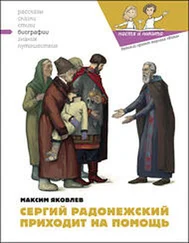Максим Шапиро - Гуманитарная помощь
Здесь есть возможность читать онлайн «Максим Шапиро - Гуманитарная помощь» весь текст электронной книги совершенно бесплатно (целиком полную версию без сокращений). В некоторых случаях можно слушать аудио, скачать через торрент в формате fb2 и присутствует краткое содержание. Год выпуска: 2015, Жанр: Фантастика и фэнтези, на русском языке. Описание произведения, (предисловие) а так же отзывы посетителей доступны на портале библиотеки ЛибКат.
- Название:Гуманитарная помощь
- Автор:
- Жанр:
- Год:2015
- ISBN:нет данных
- Рейтинг книги:5 / 5. Голосов: 1
-
Избранное:Добавить в избранное
- Отзывы:
-
Ваша оценка:
- 100
- 1
- 2
- 3
- 4
- 5
Гуманитарная помощь: краткое содержание, описание и аннотация
Предлагаем к чтению аннотацию, описание, краткое содержание или предисловие (зависит от того, что написал сам автор книги «Гуманитарная помощь»). Если вы не нашли необходимую информацию о книге — напишите в комментариях, мы постараемся отыскать её.
Гуманитарная помощь — читать онлайн бесплатно полную книгу (весь текст) целиком
Ниже представлен текст книги, разбитый по страницам. Система сохранения места последней прочитанной страницы, позволяет с удобством читать онлайн бесплатно книгу «Гуманитарная помощь», без необходимости каждый раз заново искать на чём Вы остановились. Поставьте закладку, и сможете в любой момент перейти на страницу, на которой закончили чтение.
Интервал:
Закладка:
93
McAuliffe, K., & Hawks, J. (2010). If Modern Humans Are So Smart, Why Are Our Brains Shrinking. Discover Magazine, 31, 54-59.
94
McDaniel, M. A. (2005). Big-brained people are smarter: A meta-analysis of the relationship between in vivo brain volume and intel igence. Intelligence, 33(4), 337-346.
95
Leonard, W. R., & Robertson, M. L. (1994). Evolutionary perspectives on human nutrition: the influence of brain and body size on diet and metabolism. American Journal of Human Biology, 6(1), 77-88.
96
Cosmides, L., & Tooby, J. (1992). Cognitive adaptations for social exchange. The adapted mind, 163-228.
97
Bailey, D. H., & Geary, D. C. (2009). Hominid brain evolution. Human Nature, 20(1), 67-79.
98
Pinker, S. (2011). The better angels of our nature: Why violence has declined (Vol. 75). New York: Viking.
99
http://en.wikipedia.org/wiki/War_Before_Civilization#mediaviewer/File:War_deaths_caused_by_warfare.svg
100
http://www.newscientist.com/embedded/20worst
101
Keeley, L. H. (1996). War before civilization. Oxford University Press.
102
LeBlanc, S. A. (2003). Constant battles: The myth of the peaceful, noble savage. Macmil an.
103
Wilson, M. L., Boesch, C., Fruth, B., Furuichi, T., Gilby, I. C., Hashimoto, C., .. & Wrangham, R. W. (2014). Lethal aggression in Pan is better explained by adaptive strategies than human impacts. Nature, 513(7518), 414-417.
104
Wrangham, R. W., Wilson, M. L., & Mul er, M. N. (2006). Comparative rates of violence in chimpanzees and humans. Primates, 47(1), 14-26.
105
Mitani, J. C., Watts, D. P., & Amsler, S. J. (2010). Lethal intergroup aggression leads to territorial expansion in wild chimpanzees. Current Biology, 20(12), R507-R508.
106
Aureli, F., Schaffner, C. M., Verpooten, J., Slater, K., & Ramos‐Fernandez, G. (2006). Raiding parties of male spider monkeys: insights into human warfare?. American Journal of Physical Anthropology, 131(4), 486-497.
107
Gutin, G., & Punnen, A. P. (Eds.). (2002). The traveling salesman problem and its variations (Vol. 12). Springer.
108
Bremermann, H. J. (1962). Optimization through evolution and recombination. Self-organizing systems, 93-106.
109
Paul Davies (2006). The Goldilocks Enigma. First Mariner Books. p. 43–. ISBN 978-0-618-59226-5. Retrieved 1 July 2013.
110
Krippendorff, Klaus. "Combinatorial Explosion". Web Dictionary of Cybernetics and Systems. PRINCIPIA CYBERNETICA WEB. Retrieved 29 November 2010.
111
Davis, L. (Ed.). (1991). Handbook of genetic algorithms (Vol. 115). New York: Van Nostrand Reinhold.
112
Wiser, M. J., Ribeck, N., & Lenski, R. E. (2013). Long-term dynamics of adaptation in asexual populations. Science, 342(6164), 1364-1367.
113
Quastler, H. (1964). The emergence of biological organization. New Haven: Yale University Press.
114
http://news.microsoft.com/2002/02/25/microsoft-terrarium-game-demonstrates-continuing-developer-enthusiasm-for-net-platform/
115
http://habrahabr.ru/company/microsoft/blog/130755/
116
King, A. J., Wilson, A. M., Wilshin, S. D., Lowe, J., Haddadi, H., Hailes, S., & Morton, A. J. (2012). Selfish-herd behaviour of sheep under threat. Current Biology, 22(14), R561-R562.
117
Simon, H. A. (1956). "Rational Choice and the Structure of the Environment". Psychological Review 63 (2): 129–138. doi:10.1037/h0042769. (page 129: "Evidently, organisms adapt wel enough to ‘satisfice’; they do not, in general, ‘optimize’."; page 136: "A ‘satisficing’ path, a path that wil permit satisfaction at some specified level of all its needs.")
118
Gigerenzer, G., & Selten, R. (Eds.). (2002). Bounded rationality: The adaptive toolbox. Mit Press.
119
Jablonka, E., & Lamb, M. J. (2014). Evolution in Four Dimensions, revised edition: Genetic, Epigenetic, Behavioral, and Symbolic Variation in the History of Life. MIT press.
120
Aplin, L. M., Farine, D. R., Morand-Ferron, J., Cockburn, A., Thornton, A., & Sheldon, B. C. (2014). Experimentally induced innovations lead to persistent culture via conformity in wild birds. Nature.
121
Lyons, D. E., Young, A. G., & Keil, F. C. (2007). The hidden structure of overimitation. Proceedings of the National Academy of Sciences, 104(50), 19751-19756.
122
Topál, J., Gergely, G., Miklósi, Á., Erdőhegyi, Á., & Csibra, G. (2008). Infants' perseverative search errors are induced by pragmatic misinterpretation. Science, 321(5897), 1831-1834.
123
Tennie, C., Call, J., & Tomasel o, M. (2009). Ratcheting up the ratchet: on the evolution of cumulative culture. Philosophical Transactions of the Royal Society B: Biological Sciences, 364(1528), 2405-2415.
124
Biémont, C., & Vieira, C. (2006). Genetics: junk DNA as an evolutionary force. Nature, 443(7111), 521-524.
125
Dawkins, R. (1993). Viruses of the mind. Dennett and his critics: Demystifying mind, 13-27.
126
Whiten, A., Horner, V., & De Waal, F. B. (2005). Conformity to cultural norms of tool use in chimpanzees. Nature, 437(7059), 737-740.
127
Henrich, J., & Boyd, R. (1998). The evolution of conformist transmission and the emergence of between-group differences. Evolution and human behavior, 19(4), 215-241.
128
Asch, S. E. (1956). Studies of independence and conformity: I. A minority of one against a unanimous majority. Psychological monographs: General and applied, 70(9), 1-70.
129
Bond, R., & Smith, P. B. (1996). Culture and conformity: A meta-analysis of studies using Asch's (1952b, 1956) line judgment task. Psychological bul etin, 119(1), 111.
130
Klucharev, V., Hytönen, K., Rijpkema, M., Smidts, A., & Fernández, G. (2009). Reinforcement learning signal predicts social conformity. Neuron, 61(1), 140-151.
131
Edelson, M., Sharot, T., Dolan, R. J., & Dudai, Y. (2011). Following the crowd: brain substrates of long-term memory conformity. science, 333(6038), 108-111.
132
Jost, J. T., & Banaji, M. R. (1994). The role of stereotyping in system‐justification and the production of false consciousness. British Journal of Social Psychology, 33(1), 1-27.
133
Samuelson, W., & Zeckhauser, R. (1988). Status quo bias in decision making. Journal of risk and uncertainty, 1(1), 7-59.
134
Jost, J., & Hunyady, O. (2003). The psychology of system justification and the palliative function of ideology. European review of social psychology, 13(1), 111-153.
135
Haigh, J. (1978). The accumulation of deleterious genes in a population—Mul er's ratchet. Theoretical population biology, 14(2), 251-267.
136
Clarke, C. A., Mani, G. S., & Wynne, G. (1985). Evolution in reverse: clean air and the peppered moth. Biological Journal of the Linnean Society, 26(2), 189-199.
Читать дальшеИнтервал:
Закладка:
Похожие книги на «Гуманитарная помощь»
Представляем Вашему вниманию похожие книги на «Гуманитарная помощь» списком для выбора. Мы отобрали схожую по названию и смыслу литературу в надежде предоставить читателям больше вариантов отыскать новые, интересные, ещё непрочитанные произведения.
Обсуждение, отзывы о книге «Гуманитарная помощь» и просто собственные мнения читателей. Оставьте ваши комментарии, напишите, что Вы думаете о произведении, его смысле или главных героях. Укажите что конкретно понравилось, а что нет, и почему Вы так считаете.










